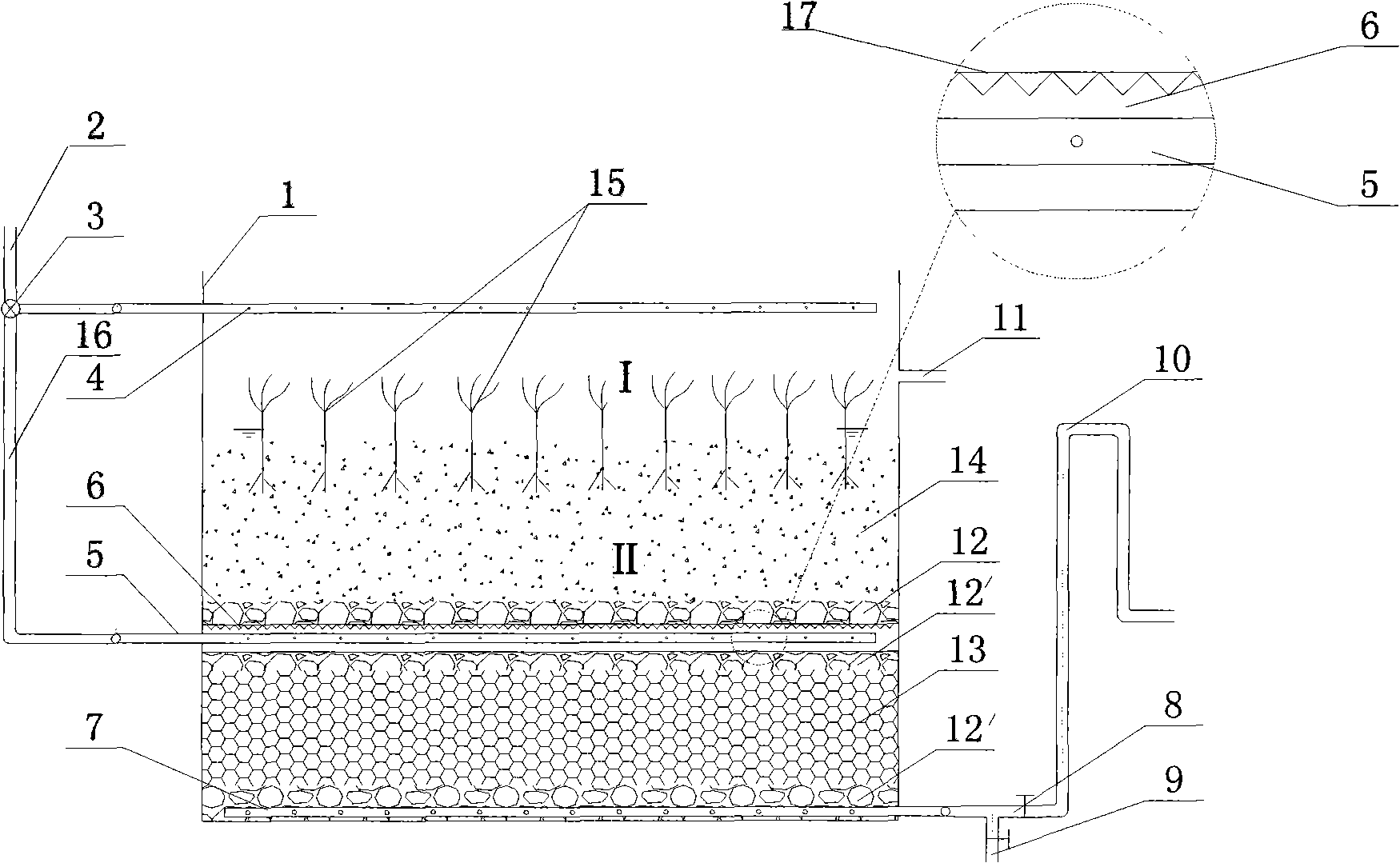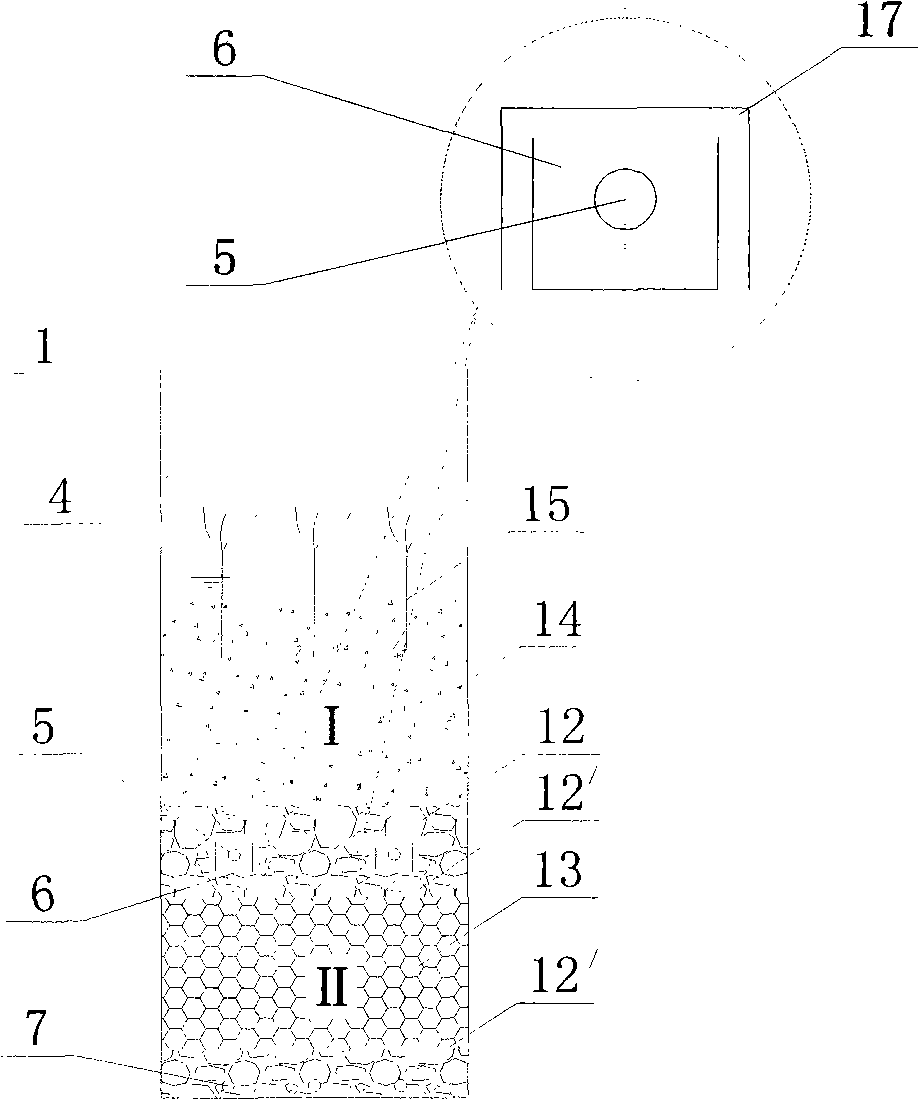Double-layer artificial wetland system for strengthening sewage denitrification and dephosphorization and operation method thereof
A constructed wetland system, nitrogen and phosphorus removal technology, applied in the field of sewage treatment, can solve the problems of secondary pollution, increased investment cost, insufficient oxygen supply, etc., and achieve the effects of reduced land occupation, easy operation and maintenance, and simple process flow
- Summary
- Abstract
- Description
- Claims
- Application Information
AI Technical Summary
Problems solved by technology
Method used
Image
Examples
Embodiment Construction
[0044] refer to figure 1 and figure 2
[0045] The invention provides a double-layer constructed wetland system for strengthening sewage denitrification and dephosphorization, the structure of which is as follows figure 1 As shown, it includes the upper wetland I, the lower wetland II placed inside the pool body 1, the water inlet distribution system and the effluent collection system that provide water for the upper wetland I and the lower wetland II, and the effluent collection system of the effluent collection system The pipe 7 is placed at the bottom of the lower wetland II, the upper wetland I is filled with mineral fillers 14 whose main purpose is to remove suspended solids, organic matter, ammonia nitrogen and phosphorus, and the lower wetland II is filled with organisms that are conducive to the growth of microorganisms and whose main purpose is to remove total nitrogen. filler13. Among them, the mineral filler 14 in the upper wetland is a mixture of limestone and ...
PUM
| Property | Measurement | Unit |
|---|---|---|
| diameter | aaaaa | aaaaa |
| particle diameter | aaaaa | aaaaa |
| particle diameter | aaaaa | aaaaa |
Abstract
Description
Claims
Application Information
 Login to View More
Login to View More - R&D
- Intellectual Property
- Life Sciences
- Materials
- Tech Scout
- Unparalleled Data Quality
- Higher Quality Content
- 60% Fewer Hallucinations
Browse by: Latest US Patents, China's latest patents, Technical Efficacy Thesaurus, Application Domain, Technology Topic, Popular Technical Reports.
© 2025 PatSnap. All rights reserved.Legal|Privacy policy|Modern Slavery Act Transparency Statement|Sitemap|About US| Contact US: help@patsnap.com


